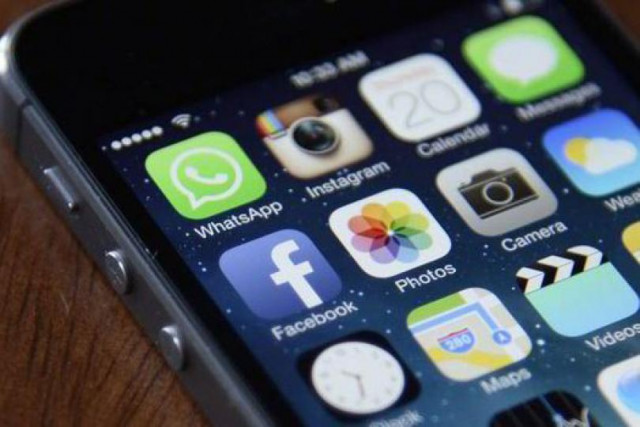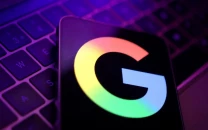What could 2017 hold for app development?
Gartner predicts more than 268 billion app downloads in 2017

Gartner predicts more than 268 billion app downloads in 2017. PHOTO: REUTERS
Today, apps are no longer built just for smartphones. They’re needed for wearables, connected homes, smart cars, IoT-enabled devices, and much more. Heading into 2017, this presents a huge opportunity for entrepreneurs and consumers; the space promises to be very exciting indeed. Cloud-based apps and services have become more important in 2016. The ability to share and sync data in real time with servers and other devices has driven many innovations.
Google’s Motion Stills app now lets you create GIFs with motion text
But it’s now time to look forward. Here are some key mobile app development trends to watch in 2017.
1. Location-based services (LBS) will continue their rise
With the availability and ease of use of GPS on all mobile devices today, location-based services (LBS) will begin to evolve further and give users real-time information or deals based on their whereabouts. Several key areas where LBS can be implemented are indoor mapping, location-specific payment portals, retail offers, security features, navigation, and travel and tourism.
Leading tech giants have recently made huge purchases in the LBS space, and Beacon technology is also becoming increasingly popular. Since the service drains battery power pretty fast, hardware advancements in this particular area can also enable developers and businesses to flourish in 2017.
2. Augmented Reality (AR) will be integrated into utility apps
Apps that use Augmented Reality (AR) have long been viewed as gimmicky or promotional. But over time, a significant number of apps have started putting AR to use. With the addition of wearables to the picture, AR tools can be used more effectively and productively than ever before. In that context, recognition of words or phrases is something that can be capitalized upon in messenger apps and the like. If someone sends a video, text, or audio with a particular catchphrase, a related actionable item can pop up.
For instance, detection of the word “cab” can trigger a taxi-sharing app; detection of the word “coffee” can open a calendar to set up an appointment. Other possible integrations: social media syncing, location tracking, or product links.
3. Android Instant Apps will become a common trend
Google recently announced its Instant Apps feature, which enables Android apps to run instantly. Such apps don’t need to be downloaded or installed; they can run with a single tap. The “run-only-as-needed” concept could change the app industry.
Imagine conducting a search and then having a related app turning up on the results page that can be run instantly without installation. No need to wait for it to download, no need to use data to install it and best of all, no usage of precious memory space on the phone to store it. Such apps are, generally, preview versions with a few advanced features missing. But they’re perfect for a quick insight and experience.
4. Embedded AI within apps will become the norm
Imagine a picture that changes dynamically according to your moods or situations. More developers are building machine learning and AI into their apps. The implications are huge. While photo filters are relatively easy to create, developers could soon start devising innovative ways in which self-learning apps could customize what they display to users based on their personal preferences or location-specific data.
Also known as neural networks, such services can soon shift from data centers to everyday devices such as cameras, phones, and IoT-enabled devices.
5. IoT app integrations will continue unchallenged
The IoT industry is in the midst of a major boom right now, and apps that cater to IoT and integrate the best will ride the wave the strongest. Companies in the fields of health, education, security, smart homes, automobiles and more have all started experimenting and integrating with IoT advancements so keeping that in mind during the development of apps will be a good move in 2017.
Some apps are apparently storing people's information without their consent
For developers, such integrations will involve the usage of complex mobile platforms and enterprise backend infrastructure that can communicate and share data between all devices. Data analytics also becomes key here since all the data that is stored and shared needs to be accessed easily and efficiently.
6. Application security will be more important than ever
Smartphone security has become more crucial than ever before – because of the sensitivity and quantity of user data a smartphone holds, especially in the form of access to other accounts and contacts. Surprisingly, a large number of people still do not take smartphone security as seriously as they should, and this is a huge concern for app developers as well. Apps with in-built security features can make a huge difference here and should be prioritized, either at the API level or with a simple code to access the app itself.
Additionally, coding for Apple’s iOS is now moving from Objective C to Apple’s own programming language, Swift. More developers are sure to adopt the use of this platform, and this will be a game changer for many developers due to its ability to provide a better user experience and better features.
At the end of the day, though, providing a premium and smooth user experience is key for apps to succeed. Design skills and understanding the customer has become a priority for the best mobile app developers, and remain at the heart of any trends that leave their mark. Rich media including rich images, videos, and audio that make apps better and more memorable are becoming crucial. Here’s to seeing some truly groundbreaking apps come our way in 2017 in a burgeoning market space.
This article originally appeared on Tech in Asia.
Have something to add? Please share in the comments below.



















COMMENTS
Comments are moderated and generally will be posted if they are on-topic and not abusive.
For more information, please see our Comments FAQ